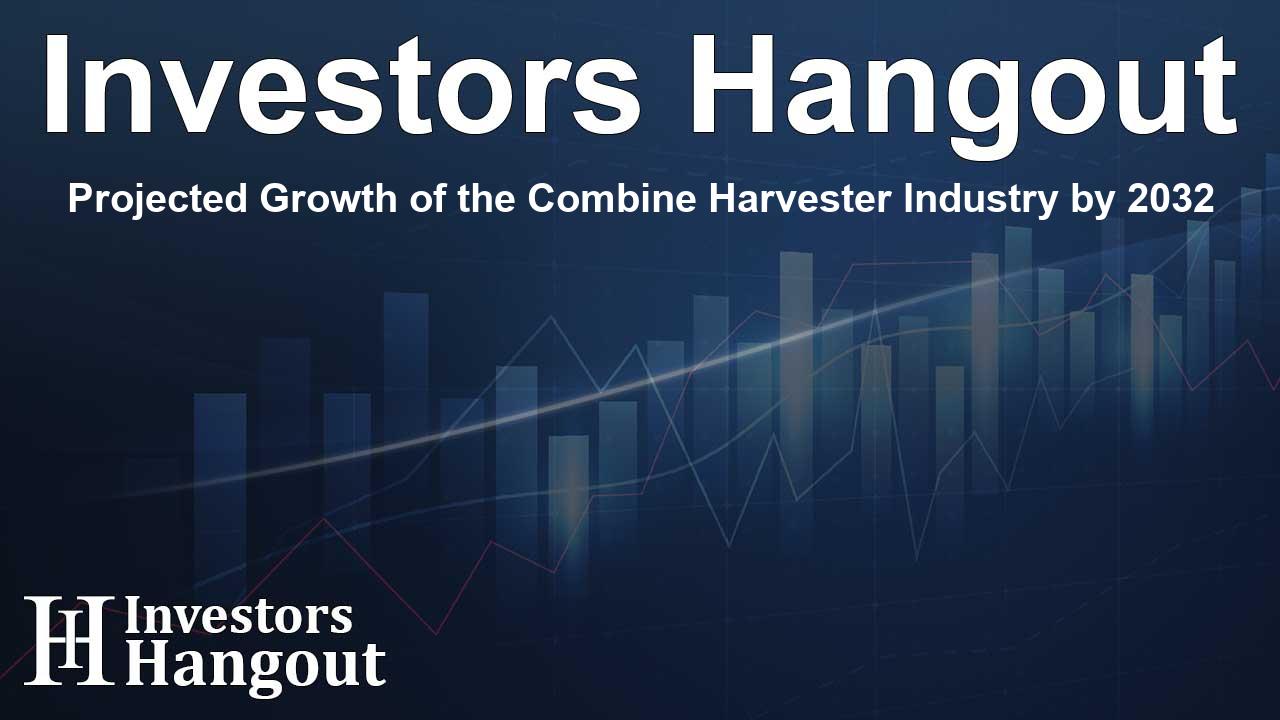Projected Growth of the Combine Harvester Industry by 2032

Overview of the Combine Harvester Market
The global combine harvester market is poised for significant growth, with current valuations around US$ 49.35 billion. It is on track to surpass US$ 69.61 billion by the year 2032, demonstrating a compound annual growth rate (CAGR) of approximately 3.9% through the forecast period. The surge in market volume has been remarkable, with sales hitting over 257,000 units in the last year alone.
Key Players and Market Dynamics
Leading this expanding industry are giants like John Deere and AGCO Corporation, who together account for a substantial portion of the annual sales. The Asia Pacific region has emerged as a key contributor, generating an impressive US$ 22.20 billion in 2023. The growth in this region can be attributed to the increasing mechanization necessitated by large-scale farming operations in countries with expansive agricultural activities.
Drivers of Demand
Several factors are fueling the escalating demand for combine harvesters globally. A critical driver is the notable labor shortage in agriculture, particularly illustrated by the aging farmer population in numerous countries, which forces a transition towards mechanized agricultural solutions. Moreover, advances in technology have significantly enhanced the efficacy of modern combine harvesters, reducing operational costs by an average of US$15 per acre. Government incentives, such as subsidies for purchasing combine harvesters, are also playing a decisive role in promoting mechanization.
Future Projections and Challenges
The future of the combine harvester market looks bright, with forecasts suggesting a market value reaching US$70.1 billion by 2032. There is an expected surge in demand for larger combine harvesters, especially in areas characterized by vast agricultural landscapes. However, challenges persist, including the high initial costs often exceeding US$ 500,000 for premium models and fluctuating prices for raw materials. Nevertheless, the global uptick in population is projected to drive higher agricultural outputs, making combine harvesters vital for productivity in farming.
Market Segmentation and Insights
As of 2023, combine harvesters featuring hydraulic systems have become the market favorite, exemplifying over 57.3% of the market share. This shift towards hydraulic mechanisms arises from their superior performance in challenging harvesting conditions, providing efficiency and reliability. The international sales of hydraulic components for agricultural machinery have surged, signaling their pivotal role in optimally functioning equipment.
Popularity of Below 150 HP Harvesters
Within the industry, combine harvesters rated below 150 horsepower (HP) have emerged as the leading category, commanding over 38.1% market share. These machines are particularly well-suited for small to medium-sized farms, reflecting their practicality and affordability. With price ranges making them viable for farmers in developing regions, below 150 HP models are instrumental in enhancing productivity for various crop types.
Dominance of Class 3-4 Combine Harvesters
Combine harvesters classified as Class 3-4, serving capacities from 5 to 8 kilograms per second, hold more than 44.9% of global sales. Their efficiency and capacity allow them to meet the diverse needs of farmers, particularly medium to large-scale operations. Continued technological enhancements in these machines have yielded remarkable improvements in efficiency and operational costs, promoting their widespread adoption across the agricultural landscape.
Competitive Landscape of the Combine Harvester Market
The competitive nature of the combine harvester market is highlighted by major players such as Deere & Company, Kubota Corporation, and Massey Ferguson, who together command over 66% of global market share. These companies are focused on delivering a diverse range of products tailored to the unique experiences and needs of farmers around the world. The rise in rental and leasing services is emerging as a viable solution for many, driving market growth further.
Frequently Asked Questions
What is the projected value of the combine harvester market by 2032?
The combine harvester market is expected to exceed US$ 69.61 billion by 2032.
Which companies lead the combine harvester market?
Major players include Deere & Company, Kubota Corporation, and AGCO Corporation, among others.
What are the key factors driving growth in this market?
Key drivers include the labor shortage in agriculture, technological advancements, and government financial incentives.
Which regions contribute most to the market's growth?
The Asia Pacific region is a significant contributor to the global combine harvester market.
What challenges does the combine harvester market face?
Challenges include high initial costs and fluctuations in raw material prices, which may impact overall growth.
About Investors Hangout
Investors Hangout is a leading online stock forum for financial discussion and learning, offering a wide range of free tools and resources. It draws in traders of all levels, who exchange market knowledge, investigate trading tactics, and keep an eye on industry developments in real time. Featuring financial articles, stock message boards, quotes, charts, company profiles, and live news updates. Through cooperative learning and a wealth of informational resources, it helps users from novices creating their first portfolios to experts honing their techniques. Join Investors Hangout today: https://investorshangout.com/
Disclaimer: The content of this article is solely for general informational purposes only; it does not represent legal, financial, or investment advice. Investors Hangout does not offer financial advice; the author is not a licensed financial advisor. Consult a qualified advisor before making any financial or investment decisions based on this article. The author's interpretation of publicly available data shapes the opinions presented here; as a result, they should not be taken as advice to purchase, sell, or hold any securities mentioned or any other investments. The author does not guarantee the accuracy, completeness, or timeliness of any material, providing it "as is." Information and market conditions may change; past performance is not indicative of future outcomes. If any of the material offered here is inaccurate, please contact us for corrections.